What is a micro niche blog?
A micro niche website is a very specific site that focuses only on one topic.
The only difference between a niche blog from a micro-niche blog is that niche sites can cover more topics within a niche, whereas a micro niche website focuses on just one topic.
For instance:
- A blog focused on “Yoga” would be a niche blog. It can cover all related to yoga, like routines, exercises, accessories, etc.
- A blog focused on “Yoga tourism” would be a micro-niche blog. This kind of blog would be focused on creating content exclusively for people who travel with the specific purpose of experiencing some form of yoga.
How To Create A Micro Niche Website in 10 Easy Steps.
Building a micro niche blog is probably the easiest way to rank and make money with a blog in 2023.
In order to create a profitable micro niche blog, there are seven steps you should do:
- Find a micro niche.
- Check your competitors.
- Pick your domain and hosting.
- Install WordPress.
- Install a theme.
- Make your logo.
- Plan your content strategy.
- Write amazing blog posts.
- Work on link building.
- Drive traffic.
Also, you are going to need access to an SEO tool if you want to see results. So I recommend you check these SEMrush alternatives or these AI SEO software solutions.
1. Find a Micro Niche.
When you look for a niche, you need to consider competition, trends, search volume, and profitability. When it comes to micro niches, all that is important, but ensuring enough search volume is vital. Otherwise, you might start a business on a niche doomed to fail because you cannot drive enough traffic.
To do this, you can use a combination of Google Trends and your SEO tool.
Step #1. Head to Google Trends and type your micro-niche idea. Observe if the trend is stable or is growing to make sure it has potential.
In this example, we can see the interest is growing, so it could be a potential good micro-niche.
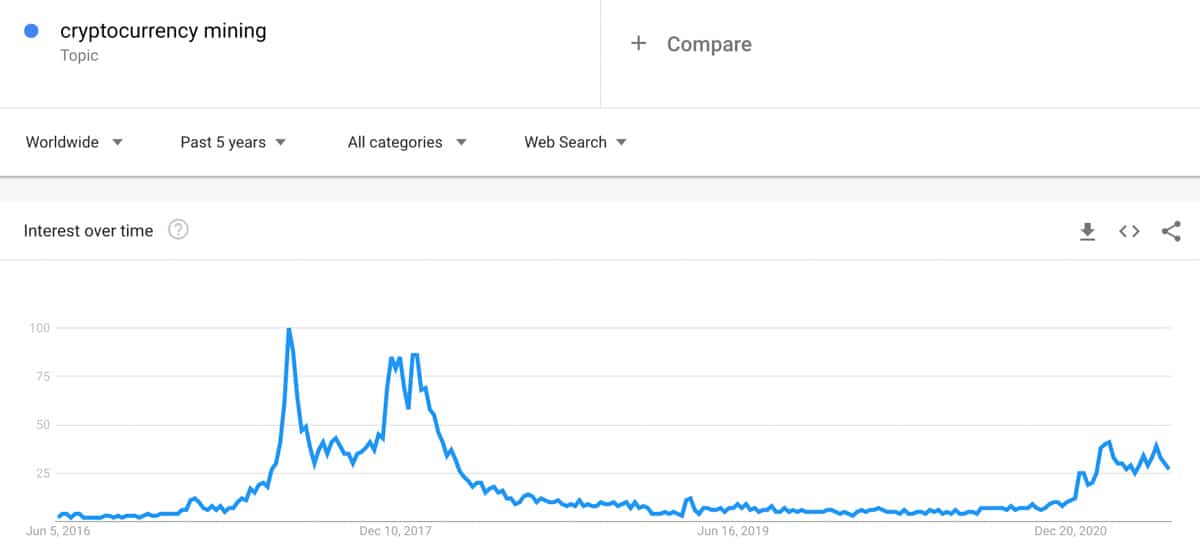
Step #2. With the help of an SEO tool, check the search volume. For this example, I am using SE Ranking.
For now, we just want to focus on search volume. In this case, this niche idea has 22.2k searches per month, which is a great number and could drive good traffic to a niche website.
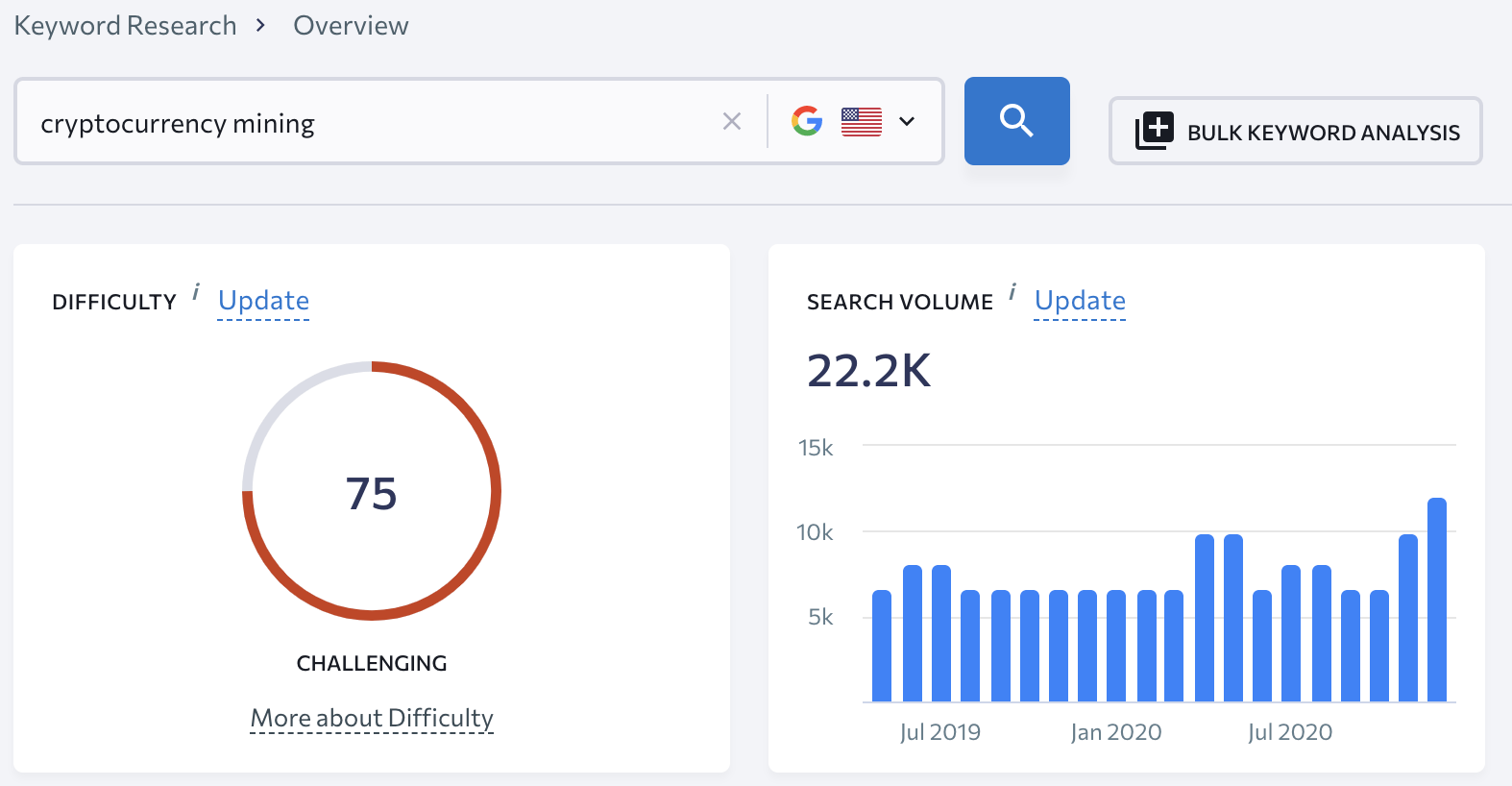
You can find more details about how to do proper niche research in this guide.
After checking both the trend and volume and checking the numbers are looking good, it is time to check your competitors.
2. Check Your Competitors.
Researching your niche competitors can give you a very good idea of the market you want to target. Also, it will show you how strong your competitors are in your selected niche.
You might find your niche idea is saturated or dominated by very big competitors. So it is vital to make sure you still have some choices.
Finding your competitors is not complicated. However, you should first differentiate between direct and indirect competitors:
- Direct competitors. Refers to companies or publishers who sell or market the same or similar products as your business. Your customers will often evaluate both you and your direct competitors before making a purchase decision or converting.
- Indirect competitors. Refers to the companies or publishers that sell a product or service in the same category as you, but it’s different enough to act as a substitute for your product or service.
Some methods to find out who your competitors are:
Method #1. Google Search.
Step #1. Head to Google, and type your niche, i.e. training for women.

Step #2. Browse Google search results, click on the results related to your niche, and inspect the website, not just the page result.
Step #3. Inspect the website to find out your direct competitors.
If the website has only a few topics covering this niche or just this one, this website probably focuses on another niche. It won’t be a direct niche competitor. However, If the results you find are totally focused on this niche, and most of their content is about this niche, they are direct competitors.
The about section can also help you easily find what a website is about and identify direct competitors faster.
Method #2. With SimilarWeb.
Step #1. Find at least one of your competitors with the previous method. Alternatively, if you already know one of your possible niche competitors, you can go directly to step #2.
Step #2. Head to Similar web and insert your competitor domain. Then click “Search.”
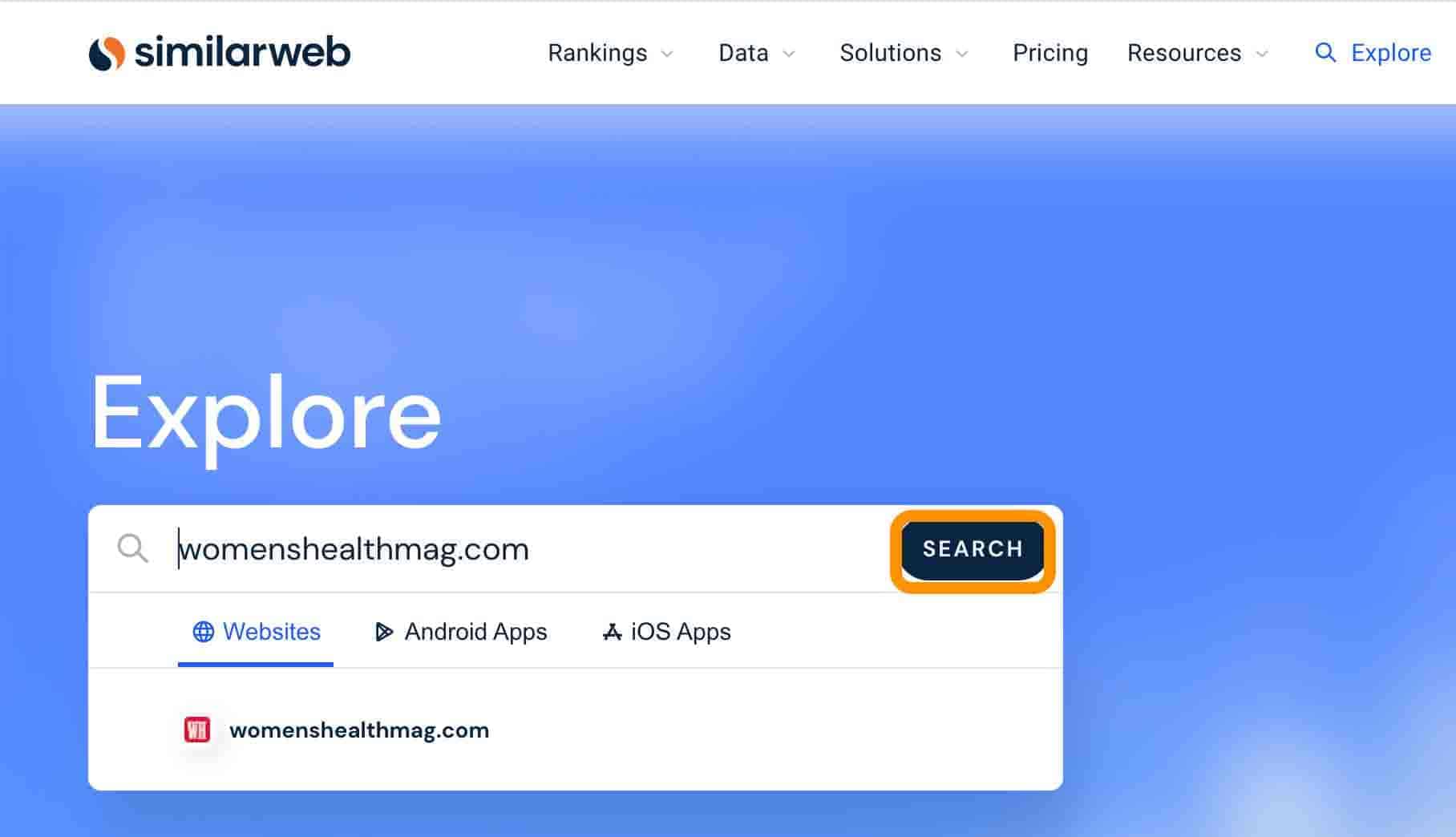
Step #3. On the left menu, click on “competitors.”
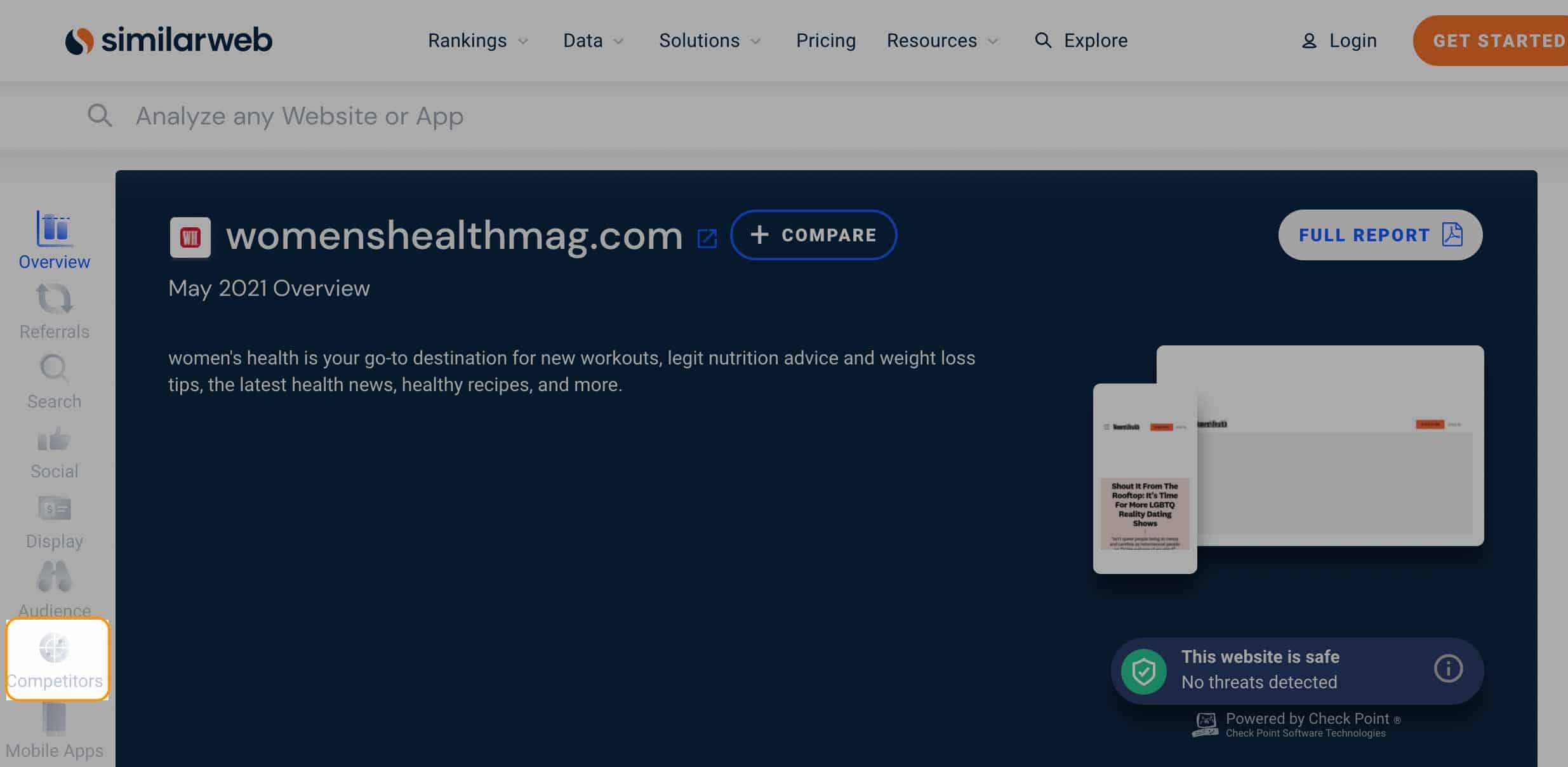
Step #4. Here you will find a list of other competitors and similar sites. Easy and effective.
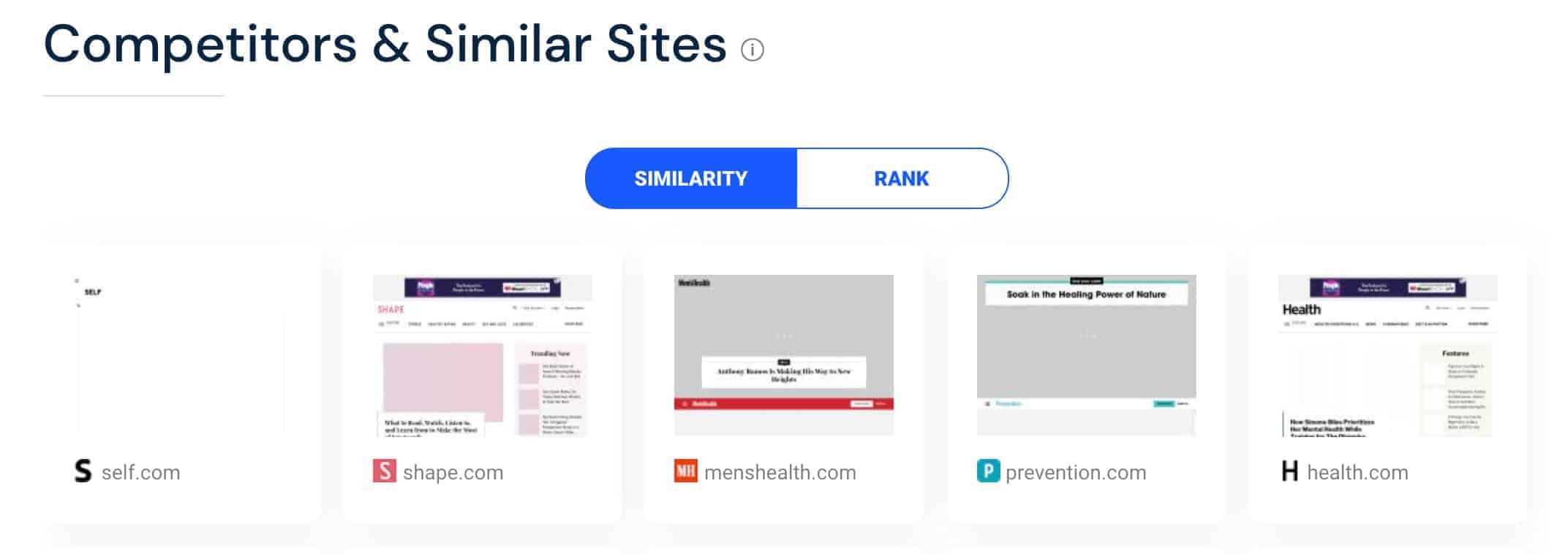
Once you find your competitors, you need to analyze them.
Ideally, you want to focus on a niche where you can get some shares in the market and make it to Google’s page one to gain exposure.
Also, by analyzing your niche competitors, you can learn what strategies they are applying. This can be a powerful method to learn what is working for them and might also work for you.
I suggest you check my article about niche competitors to learn how to perform a thorough analysis.
3. Pick Your Domain And Hosting.
After analyzing your competitors, you should be in a better position to choose your niche. And the next step would be to choose your domain and hosting. This is where your website would be hosted to make it accessible to the world.
There was a time when the domain name was key for SEO purposes, but this is no longer the case.
The only important thing when it comes to choosing a domain is:
- Make it short and memorable.
- Go always for the .com.
- Avoid hyphens.
- Use broad terms so you can scale your business. i.e., if you call it bluelaces.com and want to sell red laces in the future, it wouldn’t look good.
As per the hosting, my preferences are:
- Bluehost. Affordable and beginner-friendly. This is normally the preferred option for new bloggers with a limited budget.
- Siteground. This is my preferred option due to its speed optimization with 5 servers distributed worldwide. It works incredibly well and offers outstanding customer service. This is the one I use for this site.
- Kinsta. This is simply the king of speed. It is a premium managed WordPress hosting that features a modern interface, is very easy to use, but it comes at an elevated price. However, if you have the budget, you’ll be happy with this.
You might want to read some of my reviews to help you decide:
- Kinsta Hosting Review: Pros, Cons, Pricing, and Alternatives.
- Siteground Alternatives: 7 Powerful and Affordable Hosting Solutions.
- Kinsta vs Siteground: The Best WordPress Hostings Compared
Setting up your domain and hosting is almost the same with every provider, and it is very straightforward. However, you can find a step-by-step guide in this post about how to create a niche website.
Lastly, regardless of the hosting you choose, you can easily check domains and purchase them directly through your hosting provider.
4. Install WordPress.
The good news is that installing WordPress is easier than ever.
Most of the hosting providers already include a one-click installation, so you can install WordPress within seconds and without any knowledge.
Here is how to easily install WordPress with each of the options mentioned before:
And as simple as that, we can proceed to the next step now.
5. Install A Theme.
First of all, what is a theme? A theme is a collection of templates and stylesheets used to define a WordPress-powered website’s appearance and display.
They can be changed, managed, and added from the WordPress admin area under Appearance » Themes.
There are hundreds (if not thousands) of free and paid WordPress themes available. So which one should you choose?
If you don’t want to invest much time or money in this project, I suggest you go for a free theme. However, if this will be your business, you should treat it as such and go for a premium theme. You don’t need to waste a lot of time (like I did) to understand that a free theme will hardly have the features a premium theme has.
As a rule of thumb, you can expect a higher quality throughout from premium themes compared with their free counterparts. They normally are feature-rich, responsive, and well-supported by the vendor’s support staff.
Having said so, the decision is ultimately your choice. I will provide you with my recommendations for free and premium themes.
- Recommend Free WordPress Themes: Themeisle
- Recommended Paid WordPress Themes: Elegant Themes.
Installing a Theme.
Once you have decided on a theme, you’ll need to download it first and install it.
All the themes come with an easy installation guide, but in any case, this is how you can install any theme in WordPress:
Step #1. Login to your WordPress.
Step #2. You’ll see a panel on the left-hand side on the main screen. Navigate to Apperance>Themes
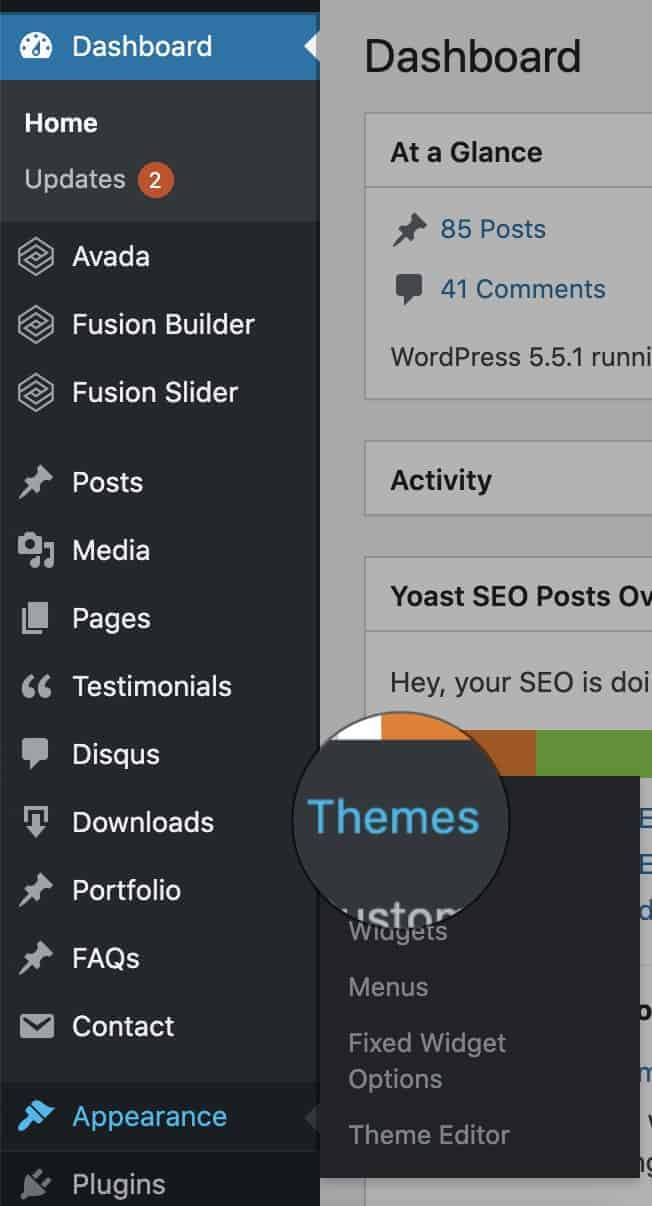
Step #3. Click on “Add new.”
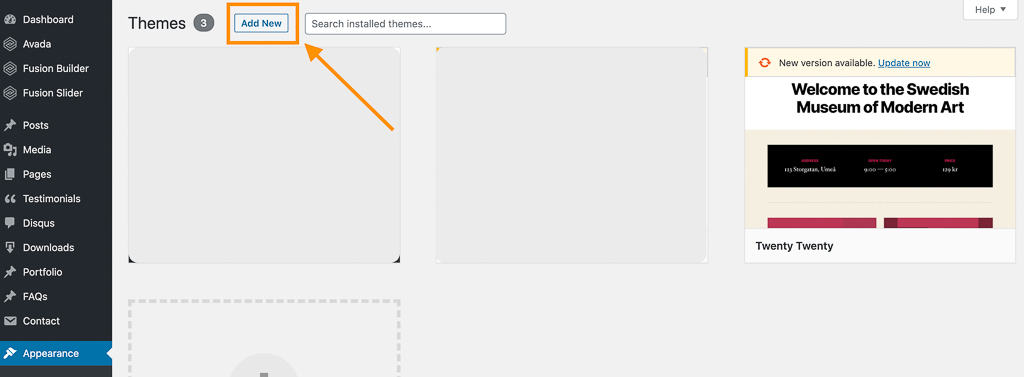
Step #4. Next, click on “upload theme.”
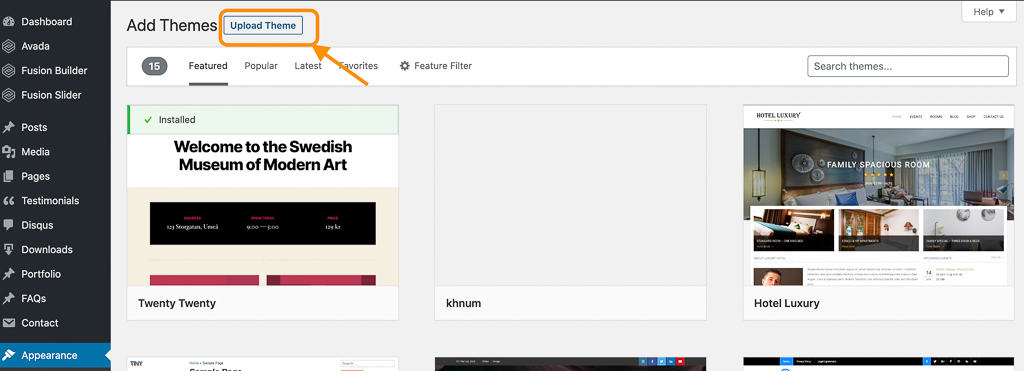
Step #5. Now, all you need to do is to click on “choose file” first, select the theme you have previously downloaded, and secondly, click on “Install Now.”

And that’s it. Now you have your theme installed on your WordPress account.
6. Make Your Logo.
Your logo is going to be your business identity.
You should make a logo aligned with the vision and voice of your website. When someone lands on your website, the logo is one of the first things they will notice. And first impressions do count online.
Remember, this project is going to be your business. So a bit of dedication and investment is a must.
If you are good with design, you can try making it yourself free using Canva. However, if you want a professional touch and get something special for your website, you should try Fiverr.
Fiverr is a platform where you can hire a freelancer to do pretty much any online job. And what is great about this platform is that you can find a professional to make you a logo for 20 bucks or less and have it ready in 24 hours.
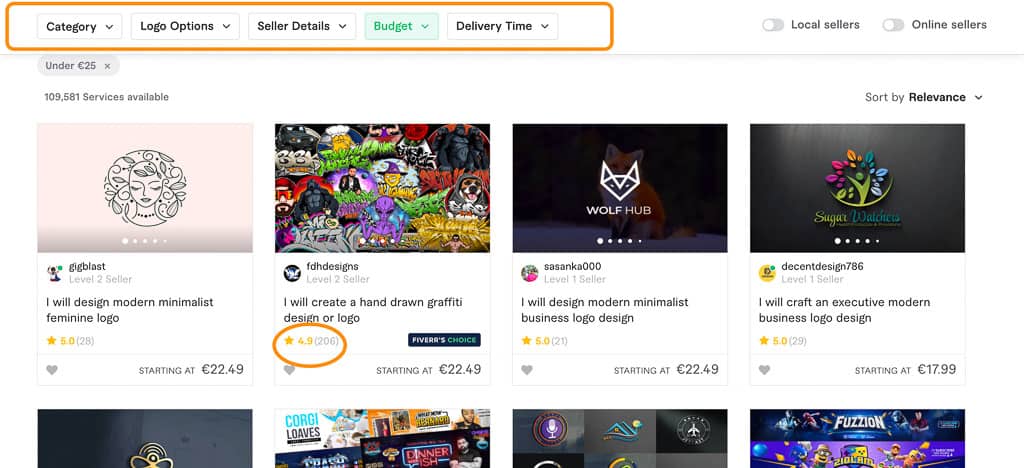
Once you have your shiny logo, head to your website to try it. You can upload a logo in your WordPress dashboard by clicking on Appearance>Customize> Logo.
I suggest you also check how to effectively do your niche branding.
7. Plan Your Content Strategy.
How do I prepare my content strategy? You might ask.
Doing thorough niche keyword research.
The ultimate objective is to make money with your website and to do that, you will need to drive traffic.
First, you need to brainstorm topics your audience would be interested in. Of course, these topics need to solve an issue for this audience. But also need to ensure these topics are not very competitive. Otherwise, it would be of no use to have an amazing article of 5000 words if no one can find it.
One of the best methods to get traffic is through SEO (search engine optimization). SEO is an acquisition channel that will grow passively. As long as you are ranking well for the keywords you’re targeting, you will get passive traffic.
So you should focus on creating content for topics with search traffic potential.
I will show you how to do this in the section below.
Brainstorming Niche Topics.
There are many places where you can start looking for topics that might interest your audience. Some of the best places where to find valuable information are:
- Facebook groups. Look for specific groups about your niche and find out what people are talking about. Not only can you find great topics this way, but you can come later to the same group and post your article to start driving traffic to your site.
- AnswerThePublic. This is a great site to find questions people ask about a topic. You need to type your keywords, and it will populate a bunch of useful questions you can use.
- Udemy. This is one of the most used platforms for online teaching. So here you can find a great variety of topics people are very interested in.
- Communities like Quora, Reddit, and other forums. People normally gather in these places, and they could be a mine of gold. Browse through popular topics, and you might find something interesting.
Even though those are handy resources for topic research, you will still need to know the search volume and how difficult it is to rank for the keywords you find.
So you are going to need a keyword research service.
My top SEO tool preferences are:
- Keysearch. This is one of the best values for money when it comes to SEO. It is powerful enough and offers all you might need to start. This is great for beginners.
- SE Ranking. This is a great all-in-one SEO tool, straightforward to use, and for all public. It offers a free 14-day trial, so I suggest you give it a try.
- SEMrush. If you are serious about SEO and want to have access to the most powerful and complete SEO tool, this is the one.
Finding Niche Keywords For Your Content.
When you are into micro niche blogging, finding the right keywords should be your number one priority. To show you how to do it, I will use SE Ranking.
Step #1. In SE Ranking, head to the “Keyword Research” module.

Step #2. Type your keyword idea and click “analyze. “

Step #3. Scroll down to the “keyword ideas” section. Although both similar and related keywords will help, there are more results on “similar keywords.” So click on “View detailed report” under similar keywords.

Step #4. Next, you will find a massive list with similar keywords. You can also choose from related and low search volume keywords.
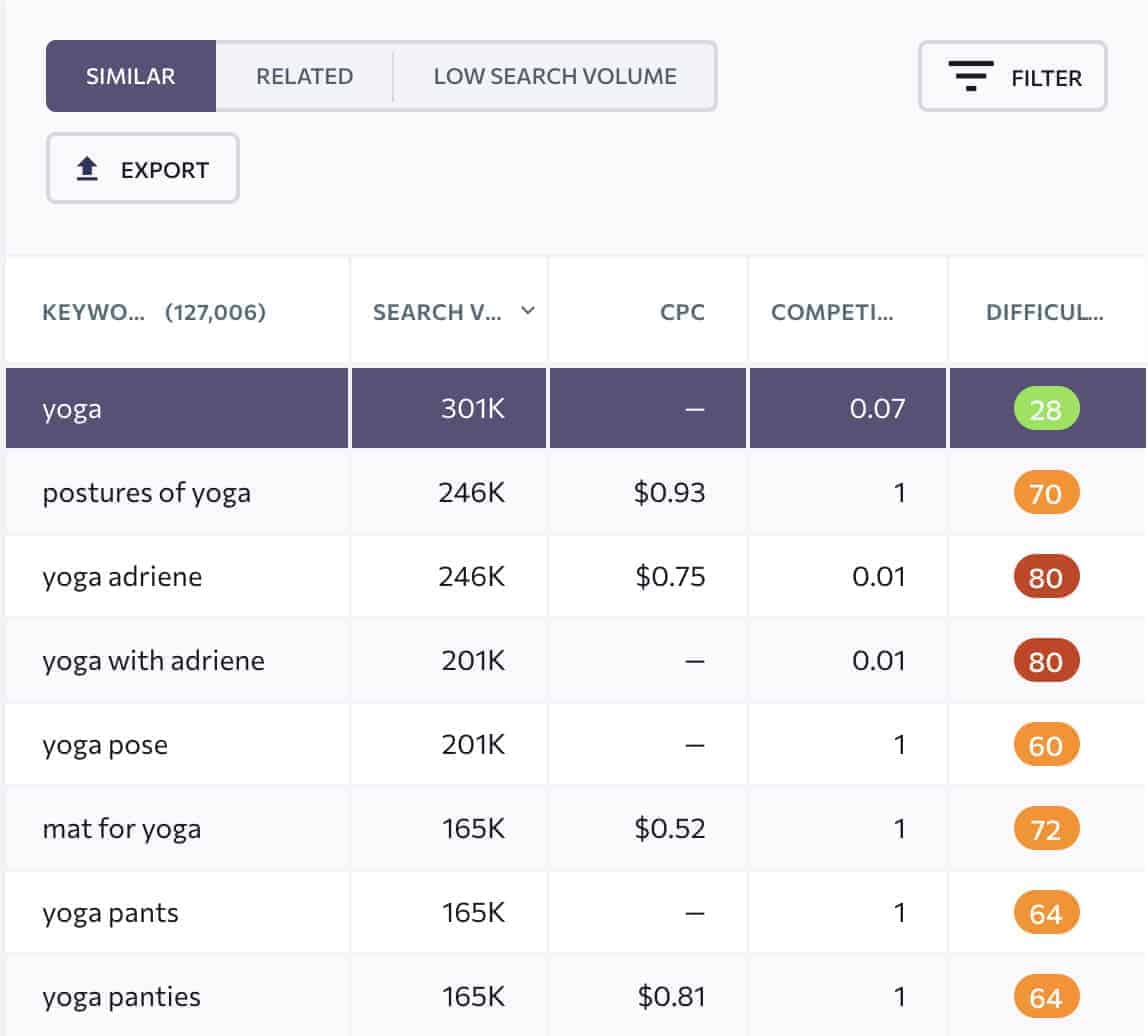
Step #5. Next, click on the “Filter” button and set your desired values. For example, I will set it for a minimum volume of 200, CPC of at least 1, and difficulty score under 40. Then click on “Apply filters.”
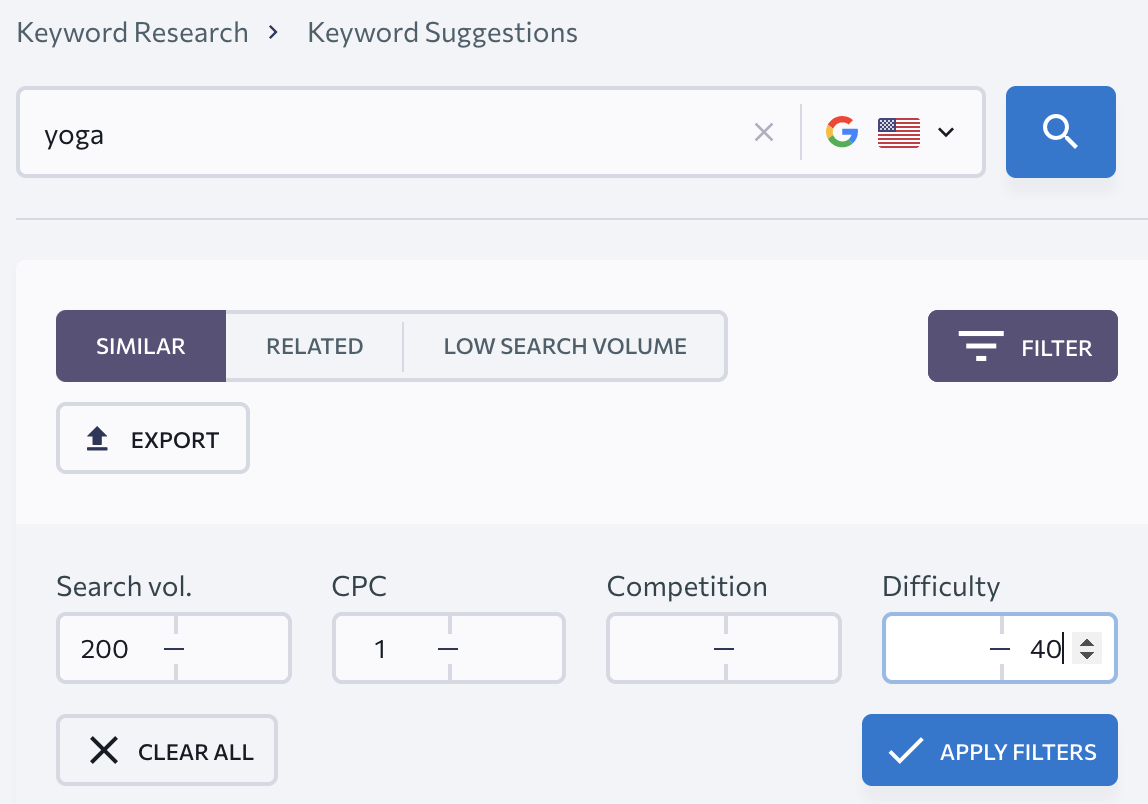
Step #6. You will get a refined list of keywords according to the values set. You can even order the list by values by clicking on the column you want to sort.
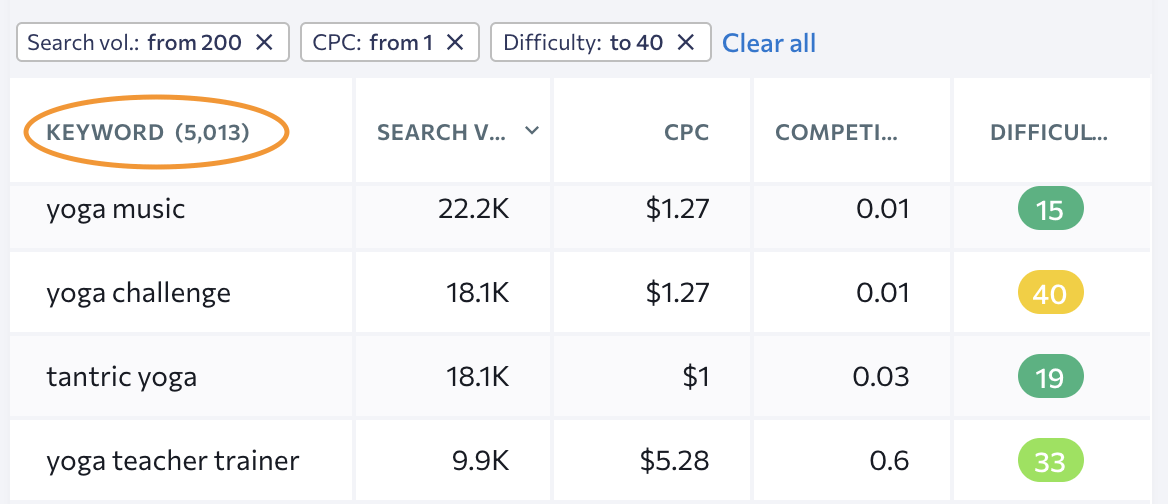
Lastly, write down all the keywords you find interesting to write about. Your goal is to develop a list of keywords with reasonable search volume, commercial value, and low competition. Once you have all this, you can start planning your content creation strategy.
Remember that a micro niche blog receives less traffic since the audience is smaller. So make sure your target keywords with low difficulty and decent search volume.
You can also follow the step-by-step guide in this niche keyword research article.
8. Write Amazing Blog Posts.
Here is where lies one of the secrets to creating a profitable micro niche blog.
When you are micro niche blogging, your audience won’t be as large as generic blogs or even niche blogs. So you want to maximize your chances of being found.
That is why when writing blog posts, you should:
- Write extensive and thorough content. If you want to be seen as an authoritative figure in your niche, you need to cover every angle of it. Once you choose a keyword, cover the topic in-depth, and not only will your audience appreciate it, but also Google will.
- Create SEO silos. This is one of the best ways to drive traffic to your most important content and build authority. this works great to increase your organic traffic also.
- Stick to your micro-niche idea. You might be tempted to write about something else, but you will never unlock the full potential of micro-niche blogging if you do. Besides, it will take you less time to take off if you stick to your niche idea when creating content.
- Be consistent with content creation. Always be consistent, even if you don’t see much traffic. Organic traffic takes some time until it works, but your effort will be worthed when it starts working.
Some resources you can use for content writing are:
- Check 10+ Content Writing Tips For Beginners To Skyrocket Your Reads to create unique and amazing content.
- Also, you need to avoid these amateur blogging mistakes.
9. Work On Your Link Building Strategy.
Building backlinks to your micro niche site is one of the most important factors that can make or break your website’s success.
Google gives top priority to sites with backlinks. So if you want to gear up your niche site game and increase your search traffic, working on your link-building strategy is a good start.
Some methods you can use to build backlinks are:
- Create amazing pieces of content. Pay attention to detail and craft exquisite blog posts that will make people willing to share them. Use the skyscraper technique to leverage this method, and people will be willing to link to your content.
- Create infographics. Adding visual infographics to your blog posts is one of the most effective methods to get some backlinks and shares.
- Write guest posts that educate other blog audiences. Ensure your guest posts are informative and detailed so you can easily link back multiple to your best content instead of asking for just one link from the author’s bio.
- Write testimonials for a product or service you have used. Many websites include dofollow links for people willing to write a testimonial.
This is not fast or easy. But the results will be worth it.
Alternatively, you can hire a freelancer to build white hat backlinks for you. If you have some budget, this is totally worth it!
10. Drive Traffic To Your Site.
If you have made it this far and don’t promote your blog content, all the work will be useless.
There are millions of blog posts published each day. This means your chances of being found with no promotion are very limited. And you have not worked that much for anything.
You might be relying only on SEO, but having some activity on your social media platforms will help boost your SEO strategy and drive traffic to your site faster.
So I am going to tell you some methods to promote your blog content effectively and drive some traffic to your micro niche blog:
- SEO. To drive organic traffic with SEO, you should start with keyword research. Once you optimize your content for Google, you will start seeing results from 3 to 6 months from your publication date.
- Pinterest. Pinning on Pinterest is a great way to drive organic traffic and make money with Pinterest affiliate marketing.
- Medium. Medium is a content publishing platform that receives millions of visitors each month. You can simply import your articles and benefit from their audience to start receiving traffic.
- Email. Email is the most effective method to send subscribers back to new articles and also to monetize your site.
- Facebook groups. Although Facebook is a waste of time to drive traffic, niche Facebook groups are incredibly effective. Look for specific groups in your niche and share your content to drive traffic to your site.
- Forums. Lastly, forums like Reddit and Quora are still powerful solutions to drive traffic. However, you need to be careful with spam, or your account will be banned quickly.
For more ways to promote your website for free, check these 10+ free traffic sources.
You might want to read next:
114 Micro Niche Blog Ideas
These are some of the best micro niche blog ideas in 2023:
1. Business Niche Ideas.
- Business acumen
- Business broker
- Change management analyst
- Cost overrun
- Electronic business
- Economic democracy
- Financial economics
- Entrepreneurship
- Franchising
- Human resources
- Intellectual property
- Interim management
- International trade
- Labour economics
- Management information system
- Revenue shortfall
- Strategic planning
2. Travel Niche Ideas.
- Train travel
- Travel by bike
- Business travel
- Volunteer travel
- Travel safety
- Medical tourism
- Scuba diving tourism
- Minimalist travel
- Sustainable travel
- Travel Adventure
3. Health And Wellness Niche Ideas.
- Mindfulness
- Organic food culture
- Workplace wellness
- Environmental health
- Health equity
- Home Gym
- Human enhancement
- Personal growth
4. Finance Niche Ideas.
- Personal finance
- Corporate finance
- Pension funds
- Credit Risk
- Interest rates
- Behavioral finance
- Cryptocurrency
- Frugal living
- Money management
5. Marketing Niche Ideas
- B2B marketing
- B2C marketing
- Advertising management
- Affiliate marketing
- Consumer behaviour
- Loyalty marketing
- Macromarketing
- Marketing management
- Marketing strategy
- Micromarketing
- Agricultural marketing
- Industrial marketing
- Destination marketing
- Influencer marketing
- Product marketing
- Content marketing
- Copywriting
6. Web Design niche ideas
- UX design
- Web development
- eCommerce
- Website security
- Web development tools
- Web hosting service
- Web template
- Website monetization
- Aesthetics
- Web 2.0
- Website builder
- Digital illustration
- Graphic design
- Web animations
- Web applications
- WordPress
7. Technology Niche Ideas.
- Software reviews
- Business automation
- Consumer electronics
- Gadget reviews
- Artificial Intelligence
- Wearables
- Watches reviews
- Videogames
- Phones comparison
- Mobile apps
- Tech consultant
- Virtual reality
8. Photography Niche Ideas
- Commercial photography
- Amateur photography
- Art photography
- Photojournalism
- Cameras Review
- Sofware Edition Reviews
- Camera Types
- Lenses
- Travel photography
- Portrait photography
- Wildlife photography
- Product photography
- Photography edition
- Drone photography
- Stock Photography
- Pet Photography
- Children Photography
- Photos for Social Media
- Architecture photographer
- Photography Courses
- Sport Photography
- Fashion Photographer
- Food Photographer
- Business Photography
Want more? Visit 336 Blog Niche Ideas To Start Your Profitable Website Today.
Micro niche blogging: Conclusion
Niche blogging is probably the most effective method to start an online business. When you opt for micro niche blogging, you will need to create more content to drive traffic since audiences are smaller. But you will be able to grow your business much faster and make money sooner.
If you follow this article, I am confident you could create your micro niche blog and see some results within six months. And that, in the blogging world, is fast!
Did you enjoy this article?
Share it on social media!